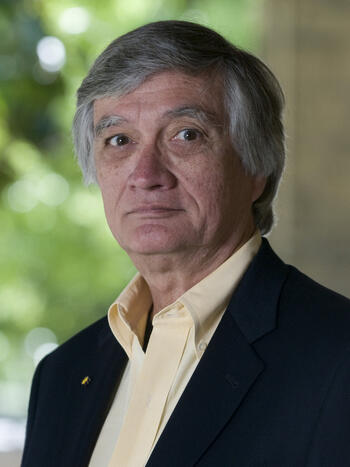Can reactor fuel debris be safely removed from Fukushima Daiichi?
Can reactor fuel debris be safely removed from Fukushima Daiichi?
More than a decade after the Fukushima Daiichi Nuclear Power Plant (FDNPP) disaster, an international team of researchers uncovered critical new information related to the retrieval and management of fuel debris, the solidified mixture of melted nuclear fuel and other materials that lie at the base of the damaged reactors.

Highly radioactive fuel debris remains in the reactors
More than a decade after the Fukushima Daiichi Nuclear Power Plant (FDNPP) disaster, an international team of researchers uncovered critical new information related to the retrieval and management of fuel debris, the solidified mixture of melted nuclear fuel and other materials that lie at the base of the damaged reactors.
The material is highly radioactive and has potential to generate enough neutrons to trigger successive nuclear fission reactions (uranium-235 breaks into two elements after capturing neutrons, emitting enormous amounts of energy, radiation, and more neutrons), presenting a safety and material management risk.
One of the materials in nuclear reactors that can lower the number of neutrons interacting with uranium-235 is boron carbide (B4C), which was used as the control rod material in the FDNPP reactors and may remain within the fuel debris. If so, it may limit fission events within the fuel debris.
Can the fuel debris be safely removed?
On March 11, 2011, the control rods were inserted into the FDNPP reactors to stop the fission reactions immediately after the earthquake, but the later tsunami destroyed the reactor cooling systems. Fuel temperatures soon became high enough (greater than 2000 °C) to cause reactor meltdowns.
Currently, the fuel debris material from each reactor is cooled and stable; however, careful assessment of these materials is needed to ascertain if successive fission reactions and associated neutron flux could occur in the fuel debris during its removal. More information is needed to understand the inventories of radioactive elements as well their boron content, a neutron absorber. And many important questions remain: was boron from the control rods lost at high temperature during the meltdown? If so, does enough boron remain in the fuel debris to limit successive fission reactions within this material? These questions must be answered to support safe decommissioning.
Study shows direct evidence of volatilization of control rods during the accident.
A team of scientists from Japan, Finland, France, and the USA has published new research in The Journal of Hazardous Materials that indicates that most of the control rod boron remains in at least two of the damaged FDNPP reactors (Units 2 and/or 3).

CISAC Co-Director Rod Ewing, who is the Frank Stanton Professor in Nuclear Security, acknowledged the importance of these new findings but highlighted that the team’s measurements now need to be “extended in follow-up studies, where the occurrence and distribution of boron species should be characterized across a wide range of debris fragments.”
Dr. Satoshi Utsunomiya and graduate student Kazuki Fueda of Kyushu University led the study. Using electron microscopy and secondary ion mass spectrometry (SIMS), the team has been able to report the first-ever measurements of boron and lithium chemistry from radioactive Cs-rich microparticles (CsMPs). CsMPs formed inside FDNPP reactor units 2 and/or 3 during the meltdowns. These microscopic particles were then emitted into the environment, and the particles hold vital clues about the extent and types of meltdown processes. The team’s new results on boron-11/boron-10 isotopic ratios (~4.2) clearly indicate that most of the boron inside the CsMPs is derived from the FDNPP control rods and not from other sources (e.g., boron from the seawater that was used to cool the reactors). Dr Utsunomiya states that the presence of boron in the CsMPs “provides direct evidence of volatilization of the control rods, indicating that they were severely damaged during the meltdowns.”
Ample boron likely remains in the reactors, but more research is needed
The team combined their new data with past knowledge on CsMP emissions to estimate that the total amount of boron released from the FDNPP reactors was likely small: 0.024–62 g.
Prof. Gareth Law, a co-author from the University of Helsinki emphasized that this “is a tiny fraction of the reactor’s overall boron inventory, and this may mean that essentially all of the control rod boron remains inside the reactors.”
Utsunomiya stresses that “FDNPP decommissioning, and specifically fuel debris removal must be planned so that the extensive fission reactions do not occur. Our international team has successfully provided the first direct evidence of volatilization of B4C during the FDNPP meltdowns, but critically, our new data indicated that large quantities of boron, which adsorbs neutrons, likely remains within fuel debris.”
Prof. emeritus Bernd Grambow, a study co-author from SUBATECH, Nantes, France, highlights that the work “paves the way for improving the safety assessment of debris retrieval during decommissioning at FDNPP,” with the team’s methods “providing a template for further studies.” Utsunomiya concludes that “it is nearly 11 years since the FDNPP disaster. In addition to tireless efforts from engineers at the FDNPP, scientific contributions are becoming more and more important as tools to address the major difficulties that will be faced during decommissioning.”
